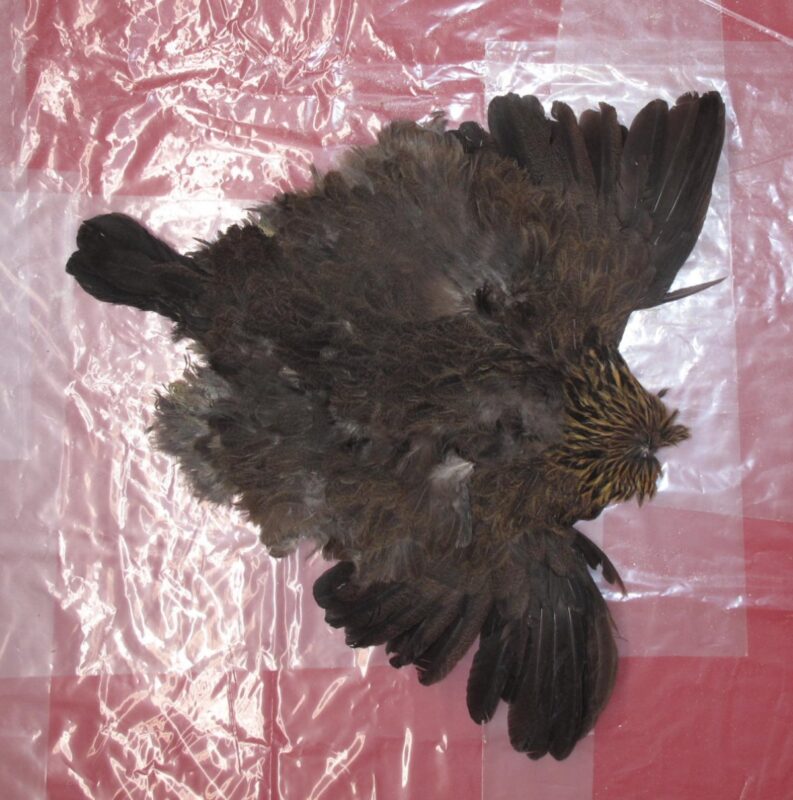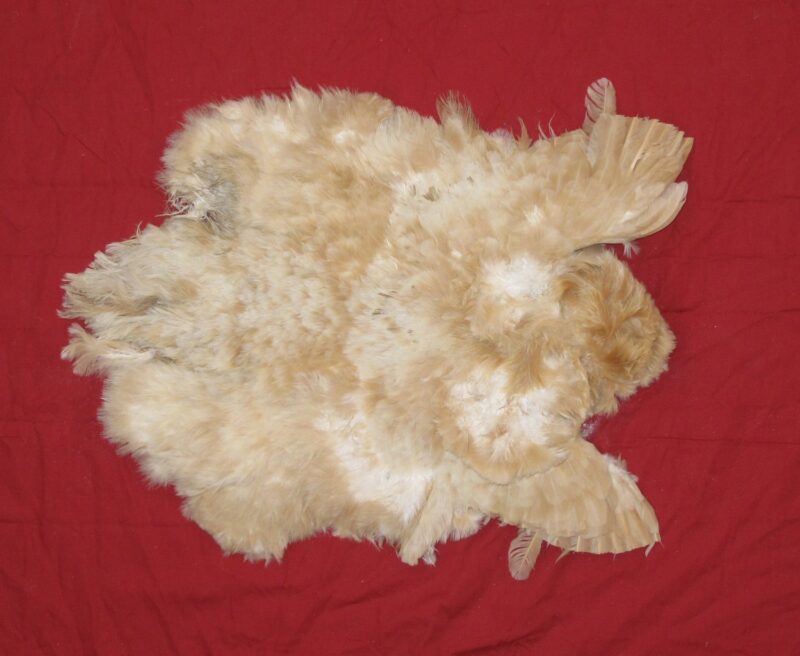Fly Tying Materials to Buy in Person: Hen Hackle Skins
Posted on November 22nd, 2021
As a commercial fly tier and outfitter, I have commercial accounts with most of the major fly tying materials distributors. I’m not allowed to talk about my discounts, specifically, but they are substantial. Flies you buy from me or from Parks’ Fly Shop would cost you twice as much, otherwise.
That said, there are still several materials I am willing to buy at full-price or very close to it, either from a fly shop or some alternate source. This is the first in a series of posts about these materials, and why they’re worth it for me to spend a lot more on them.
Hen Skins for Soft Hackles
The first material I usually buy at full price, and the one on which I probably spend the most, is hen chicken skins for soft hackles (and to a lesser extent streamers). I also buy many other bird skins for soft hackles at full price, such as hen pheasant skins, but chicken skins are by far the most important.
There’s a simple reason why I pay full price for these skins: I can pick through them and get EXACTLY the coloration I want. If I bought these skins from large wholesale distributors, I’d be dealing with the luck of the draw. I’d get whatever the person responsible for packing my order happened to grab.

Lots of soft hackle pheasant tails on this skin…
In the past, I got most of my hen skins exactly this way. At the time, I used a lot of Speckled India Hen Backs, mostly purchased from wholesaler Hareline Dubbing. These are wonderful products, available in a wide range of colors. The problem is that when I ordered half a dozen “brown” skins, say, I would get three that were dark brown with black bars, two that were almost entirely brown, and one that was medium brown with abundant random black speckles. Since I usually wanted the medium brown skins with abundant black speckles, the others largely went to waste (or I sold them).
A better option was to buy skins either in person or when I could see photos of the skin I was buying. This is possible with India Hen Backs, as many shops sell them. For my own purposes, since I need many more feathers than one skin can provide, I turned to furriers online.
I am going to be a bit of a jerk here and not give the website I most often use for these skins. They don’t sell all that many, and I use a lot of hen skins for soft hackles, streamers, collars on Woolly Buggers (such as my PT-Bugger), and legs and tails on nymphs. Instead I’ll point you towards eBay. A wide range of chicken (and other bird) skins are available. You just have to keep searching for what you want. Search for hen skin, hen pelt, chicken pelt, bird skin, or other similar search terms.

Pale hen skin for tying caddis emergers.
Slideshow from March 23 Twin Cities TU Presentation
Posted on March 25th, 2021
I gave a presentation to the Twin Cities TU chapter on Tues, March 23. Here’s a longer version of the slideshow I presented. The topic was finding and fishing uncrowded water in Yellowstone Country.
Sources for Streamflow Data
Posted on March 4th, 2021
Virtually all fly fishing guides and outfitters in Montana watch streamflow data and streamflow forecasts like hawks, especially during runoff season (that is to say: right now) and when summer thunderstorms are rolling around. This is no different than farmers watching the weather forecasts. Here are the important sites to allow YOU to check streamflows, both right now and expected flows for the days ahead.
Montana Streamflow Data: This site returns data from all USGS gauging stations in Montana. The site is organized by river drainage, then from upstream gauging stations to downstream stations. In my area, the Yellowstone Basin graphs from the Lamar River in Yellowstone Park down to the graph at Springdale are the graphs I use most often, with the Stillwater graph secondary. By far the most important graphs for general streamflow are the Corwin Springs and Livingston graphs on the Yellowstone, while the Lamar and Gardner graphs are important for telling me about sudden rises in water level (which are almost always accompanied by mud) due to storms.
Advanced Hydrologic Prediction Service – Billings: Here’s the streamflow prediction site for eastern Montana. This site shows flow graphs noted in the previous link, but also shows predicted flows for the next few days for most gauging stations. The basic graph pictured below is most useful during the spring runoff season when we are trying to plan for future trips based on weather forecast. If you’re looking at a big predicted bump coming up, it’s best to get fishing beforehand, because that bump means mud.

This site also includes an option to view “Probability Information.” This is a longer-range forecast of predicted flows, but it isn’t updated very often and I often find it inaccurate. Here’s a sample graph of probability information:

Select the above graph by clicking the dropdown menu off the lower right corner of the graph, then selecting “Flow – Weekly Chance of Exceeding Levels.” This is most useful to anglers, as flow rather than gauge height determines fishability. Too much water and things are too rough, and probably muddy to boot.